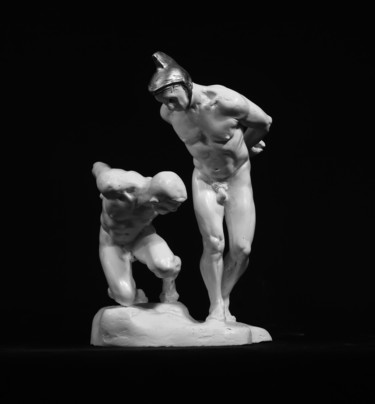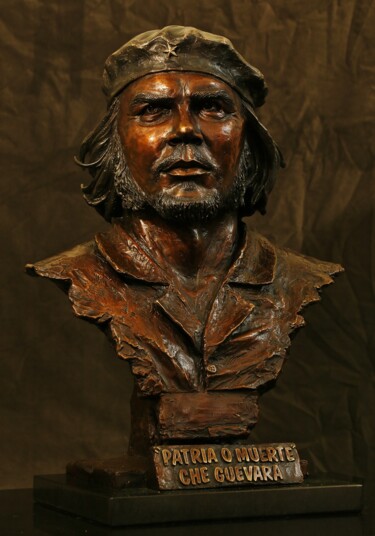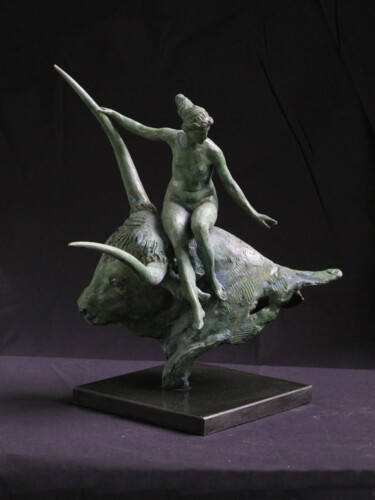 Yuri Viktorovich Gusev, Nude model 2, 1951. Oil on linen canvas, 98.5 x 74cm.
Yuri Viktorovich Gusev, Nude model 2, 1951. Oil on linen canvas, 98.5 x 74cm.
Realism seen through the eyes of Honoré Daumier
"We are not dead in vain."
The words of Daumier, a French painter, sculptor, lithographer and caricaturist, could be interpreted in two ways: first, as a kind of response, in an optimistic key, to the message launched by his 1835 caricature, which, entitled So this is all we got ourselves killed for!, alludes to the futility of the sacrifice of the martyrs of the 1830 Revolution, whose death would not be spared from the subsequent installation of a corrupt and fraudulent government. Instead, the second meaning of this phrase could be found in the very essence of realism, a current to which the aforementioned master belonged, aimed at transforming art into an instrument of social denunciation, and consequently, into fruitful, timeless food for thought. The example of what has just been stated can be drawn from the interpretation of one of the French artist's greatest masterpieces, namely The Third-Class Carriage, which, dated 1862 and preserved at the National Gallery of Canada (Ottawa), depicts the intense and engaging close-up of a poor French family, captured during its journey inside a bare and crowded railway compartment, where it is surrounded by the most total indifference, aimed at taking on the guise of the multitude of characters in bourgeois clothes.
 Honoré Daumier, The third-class carriage, 1862-65. Oil on canvas on panel, 67 x 93 cm. Ottawa: National Gallery of Canada.
Honoré Daumier, The third-class carriage, 1862-65. Oil on canvas on panel, 67 x 93 cm. Ottawa: National Gallery of Canada.
The work's immortality, apart from residing in its innovative and realistic perspective composition, lies in the message Daumier is concerned to convey, expressing a point of view in stark contrast to the official culture of the time. Indeed, the French master certainly did not die in vain, as he enabled the viewers of his time, as well as modern viewers, to discover the other side, that is, the less commercial and celebratory side, of life in the second half of the nineteenth century, an era often superficially identified through its technological achievements. Therefore, it is good to highlight how Daumier himself avoided depicting the train as a means of locomotion symbolic of progress, in order to show the discomfort of the humblest travelers, who drew minimal benefits from the innovations of the aforementioned historical period.
 Roman Rembovsky, In front of the window 2, 2013. Oil on linen canvas, 160 x 180 cm.
Roman Rembovsky, In front of the window 2, 2013. Oil on linen canvas, 160 x 180 cm.
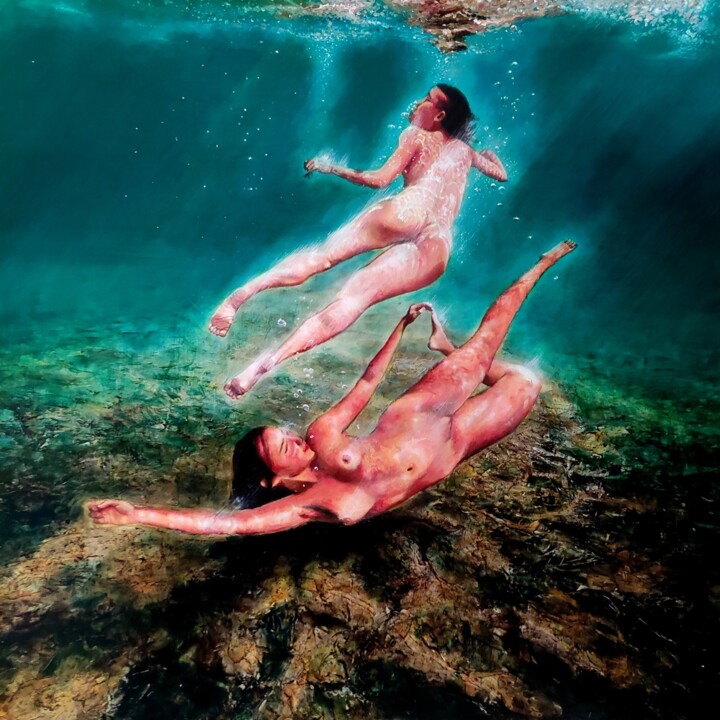 Achille Chiarello, The Nymphs (Nereids), 2021. Oil on linen canvas, 80 x 80 cm.
Achille Chiarello, The Nymphs (Nereids), 2021. Oil on linen canvas, 80 x 80 cm.
Brief history of realism
About the artistic current to which the aforementioned master belongs, realism first emerged in France, during the 1850s, when, after the Revolution of 1848, with the introduction of the right to work, art began to take an interest in the working-class population, as well as its environments and scenes of daily life. As a result, subjects previously "ignored" by artistic investigation all of a sudden became highly interesting, providing an opportunity for the great masters of the time to immortalize an unprecedented and larger part of society. In addition, this historical context, was enriched by the innovations brought about by the industrial revolution, which, on the social and economic level, led to, both the excessive growth of cities, and the worsening of the living conditions of the less affluent classes. The latter aspect also became lifeblood of the aforementioned artistic current, which, aimed at portraying subjects in an honest and accurate light, pursued the intention of showing even their most dramatic and unpleasant elements. In fact, Realism emerged as a proliferating tool for the critical documentation of life, depicting scenes, objects and subjects in meticulous, accurate and detailed way, opposing the values of the hypocritical bourgeois society of the time. In fact, Realism is widely regarded as the beginning of modern art, that is, a current, which, clearly anti-establishment and non-conformist, valued the more "simple" and genuine interest in real world, rather than the mythological and exotic figures or grandiose glorified nature scenes dear to earlier Romanticism.
 Oleg Sergeev, Nude, 2015. Pastel, 50 x 65 cm.
Oleg Sergeev, Nude, 2015. Pastel, 50 x 65 cm.
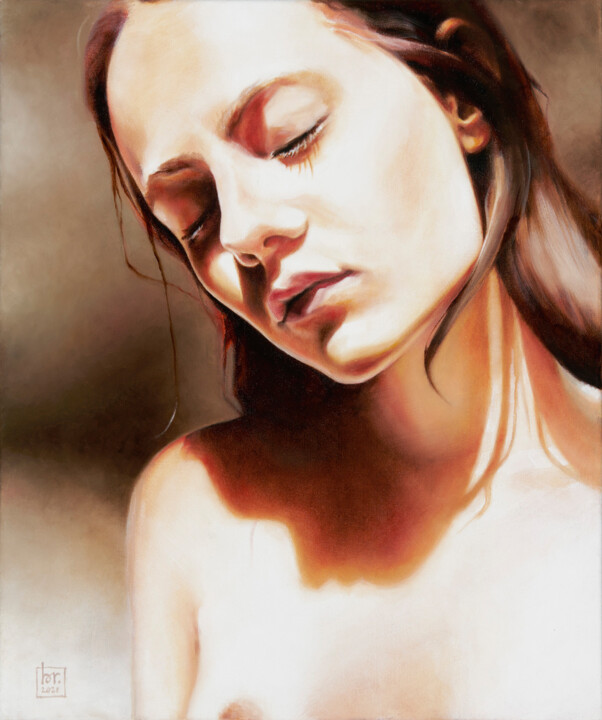 Bruno Mellis, Tory, 2021. Oil on canvas, 60 x 50 cm.
Bruno Mellis, Tory, 2021. Oil on canvas, 60 x 50 cm.
Realism in the artworks of Artmajeur artists
Speaking of today's art, the aforementioned current continues to manifest itself through the same fidelity to the real datum, aimed at taking shape through the explication of a high technical skill, probably derived from a gaze that has also been wisely turned toward the current of Contemporary Realism, a movement that arose in New York during the 20th century. Thus, Artmajeur's Realist artists, such as, for example, Andrea Vandoni, Emmanuelle Vroelant and Karlijn Surminski, turn out to be the direct descendants of masters of the caliber, whether Daumier and Courbet, or Jane Freilicher and Fairfield Porter. Nevertheless, it is worth pointing out that Realism is in fact constantly evolving, since, although based on the aforementioned tradition, its figurative research is constantly being implemented by increasingly current techniques.
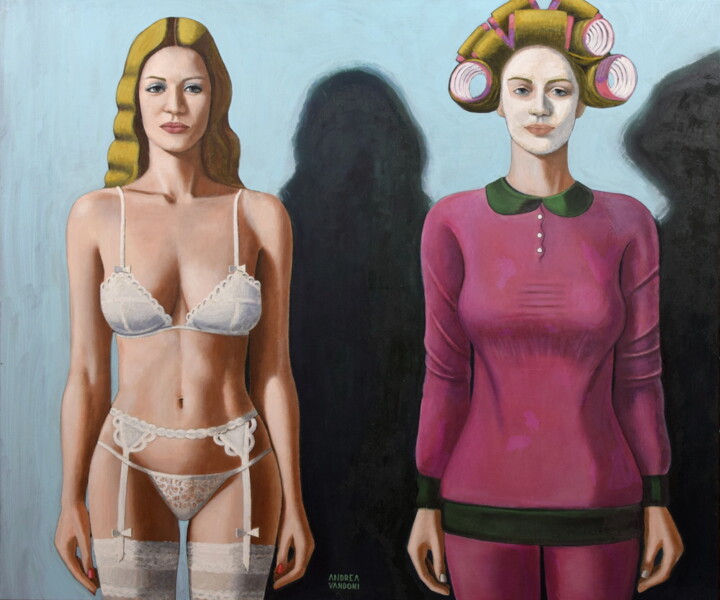 Andrea Vandoni, Before and after marriage, 2022. Acrylic on canvas, 100 x 120 cm.
Andrea Vandoni, Before and after marriage, 2022. Acrylic on canvas, 100 x 120 cm.
Andrea Vandoni: Before and After Marriage.
Referring to the above, we can say that Before and After Marriage is a realist work, as, in addition to its pictorial technique aimed at a careful rendering of reality, the painting pursues the intention of documenting a story that, according to Vandoni, represents a must in the life of a couple: the progressive transformation of the woman angel of the hearth into the queen of the cream in oversized pajamas. Not going into the veracity of this point of view, aimed at giving voice to a debate that has involved both sexes for a long time now, I report another example in which, within the art world, two opposite natures have manifested themselves in the same context. Indeed, Édouard Manet's A Bar of the Folies-Bergère was later interpreted by the Japanese artist Yasumasa Morimura, who created a second version of the graceful and elegant maiden at the counter, to whom he gave the features of a naked, virile, captivating, and ambiguous presence. Presumably, if in Vandoni's case we are talking about an after-marriage, in Morimura's it would be likely to allude to a "after-hangover," a condition aimed at turning over, and transforming, any form of life.
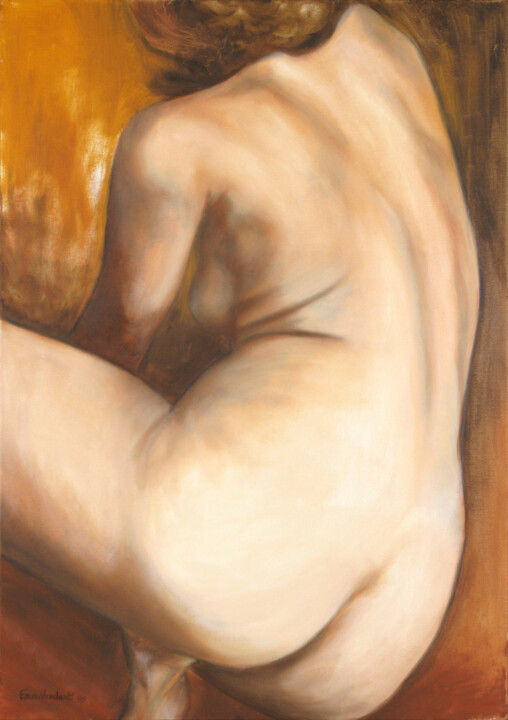 Emmanuelle Vroelant, Courbes, 2009. Oil on linen canvas, 92 x 62 cm.
Emmanuelle Vroelant, Courbes, 2009. Oil on linen canvas, 92 x 62 cm.
Emmanuelle Vroelant: Courbes
Through the close, sensual framing of Vroelant's realist painting, the viewer is allowed to gently approach the depicted female body, which, captured in its softest sinuosities, almost gives us the illusion that it can be touched in order to discover the texture of its pale skin. The Artmajeur artist's work alludes, as per its title, to the figurative investigation of the master Gustave Courbet, the undisputed leader of nineteenth-century Realism, whose production turns out to be one-fifth dedicated to the exploration of the female body, which is investigated both nude and clothed, as well as within diverse social contexts. In fact, it is well known how the artist had a turbulent love life, marked by frequenting servant girls, prostitutes and the presence of an illegitimate son. Returning to Vroelant's work, the painting, having as its focus the buttocks of the effigy, is reminiscent of the feeling one gets when admiring the back, sensuous, sinuous, and soft back of one of the protagonists of The Bathers, a work by Courbet dated 1853.
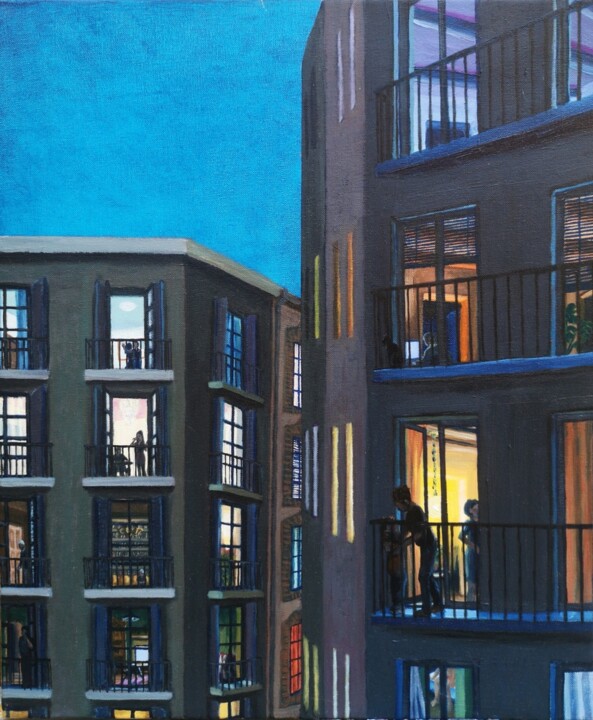 Karlijn Surminski, Barcelona spring, 2020 II, 2021. lio on linen canvas, 72 x 63.5 cm.
Karlijn Surminski, Barcelona spring, 2020 II, 2021. lio on linen canvas, 72 x 63.5 cm.
Karlijn Surminski: Barcelona primavera 2020 II
Surminski's painting gives voice to a drama that, alas, we have all experienced, namely the isolation of 2020, which, due to the Covid emergency, has kept us away, and in terror, for several months. Referring to the artist's own words, the work, aimed at telling how the outside world has suddenly become only the inside world, represents a kind of voyeuristic gaze, referring to the point of view of Edward Hopper, the undisputed master of American Realism. In particular, Barcelona Spring 2020 II could be compared to Night Windows, a 1928 painting in which Hopper immortalizes a woman, who, busy in her apartment, does not notice that she is being observed by the viewer. It is precisely in such a context that the voyeuristic opportunities that lurk in the layout of modern cities emerge, in which, although it is possible to see each other, we remain fundamentally alone and isolated. Finally, the two works are also united by their nocturnal setting, which allows for compositions rich in pathos as well as contrast between the darkness of the outside and the light of the inside.

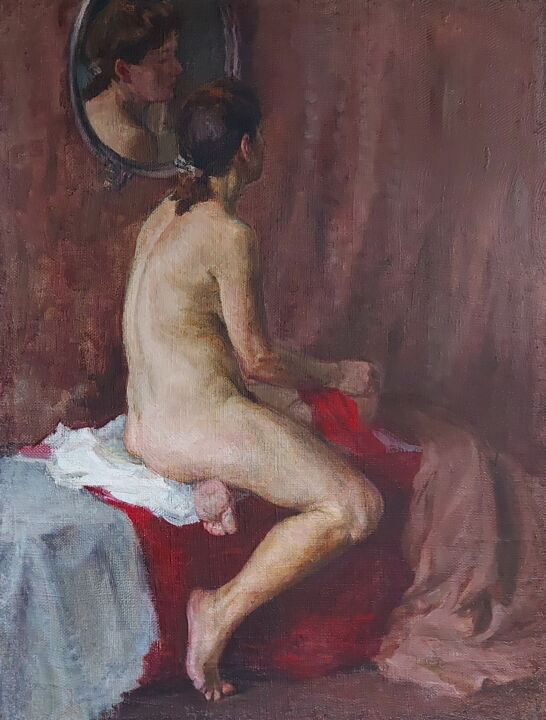
 Olimpia Gaia Martinelli
Olimpia Gaia Martinelli















